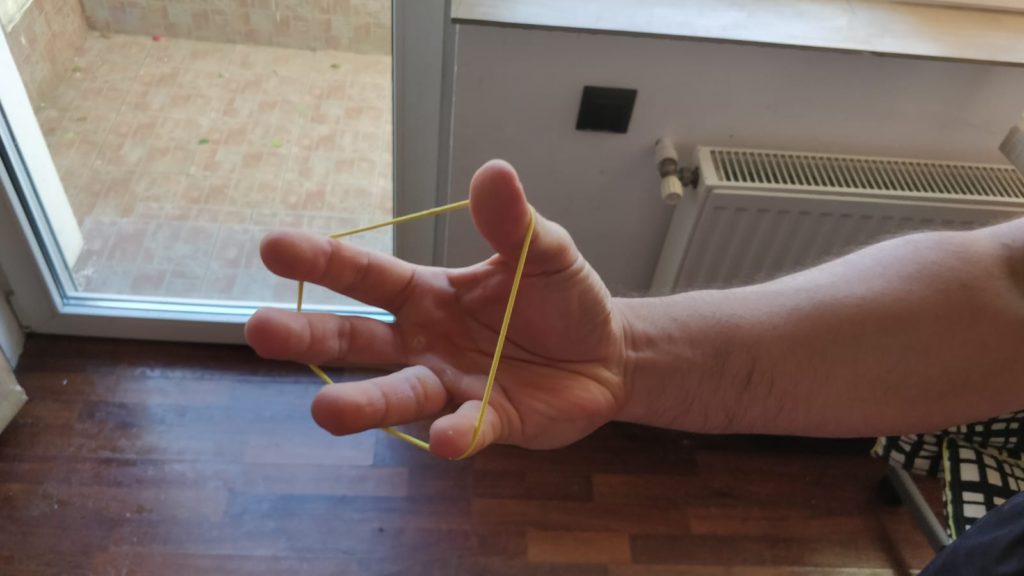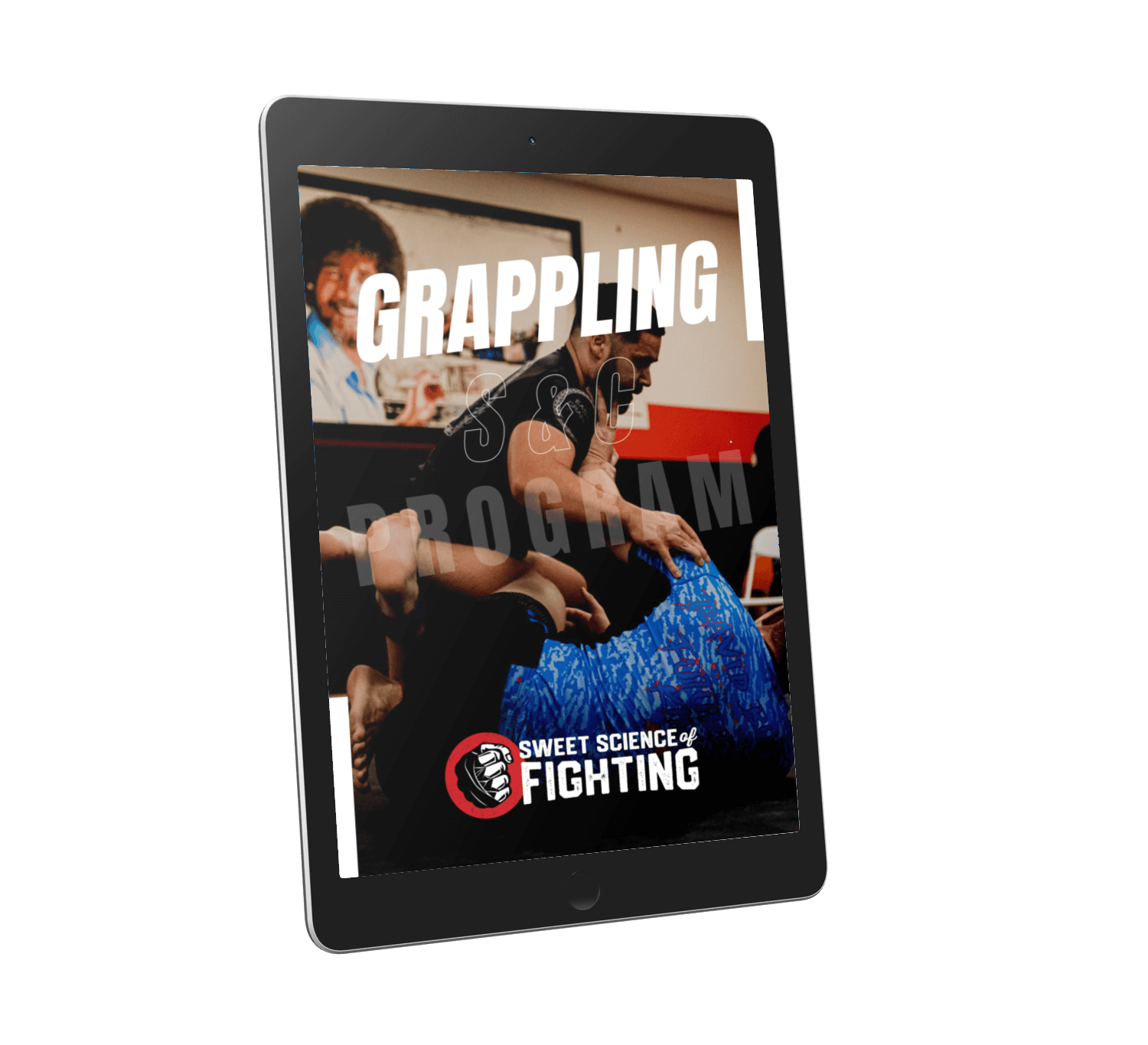We’ve all faced an opponent that has grabbed our wrist or gi and suddenly thought… f*ck. You know it’s going to be a tough match just from feeling the strength of the grip. Some BJJ athletes are genetically gifted with strong grips or come from backgrounds of working hard labor with their hands.
Others may have weaker grips that are slowly developed through practicing the sport of BJJ itself. However, there is always room for improvement by training off the mats.
Grip strength endurance is a key quality for BJJ[1]. But maximal grip strength is what separates elite and novice BJJ athletes. The main grip movements in BJJ are the support and crimp grip. Strengthening these will improve your grip strength specifically for BJJ.
These are the foundational grips in no-gi and gi respectively. Other grip movements such as crushing and pinching help develop the hands and grip further. So how can you perform these grip movements?
Why Grip Strength Is Important For BJJ
Maximal grip strength for BJJ is undervalued within the scientific literature. It is often stated that maximal gripping strength in BJJ athletes isn’t an important quality as when compared to elite judokas, they pale in comparison [2]. Rather, BJJ athletes should focus on strength endurance to mitigate fatigue.
However, when comparing elite (had a graduation from purple to black belt with 4+ years of experience) and novice (had a graduation from white to blue with <4 years’ experience) BJJ athletes, the elites displayed far greater handgrip strength [3].
That is not to say grip strength endurance isn’t important either. BJJ athletes from purple to black belt that were competing in the European IBJJF showed a 10% decrease in maximal grip strength after one competitive match [2]. I would assume this would decrease further as the competition day went along.
Safe to say, having a strong grip and being able to maintain that strong grip throughout a match and competition will likely aid your performance.
The Different Types Of Grips In BJJ
As mentioned in the introduction, there are two main grip movements in BJJ. In the gi, the crimp grip is the most often used. This is where the tips of the fingers are pressed to the base of the fingers. When you grip a sleeve, this is the grip you’ll use.
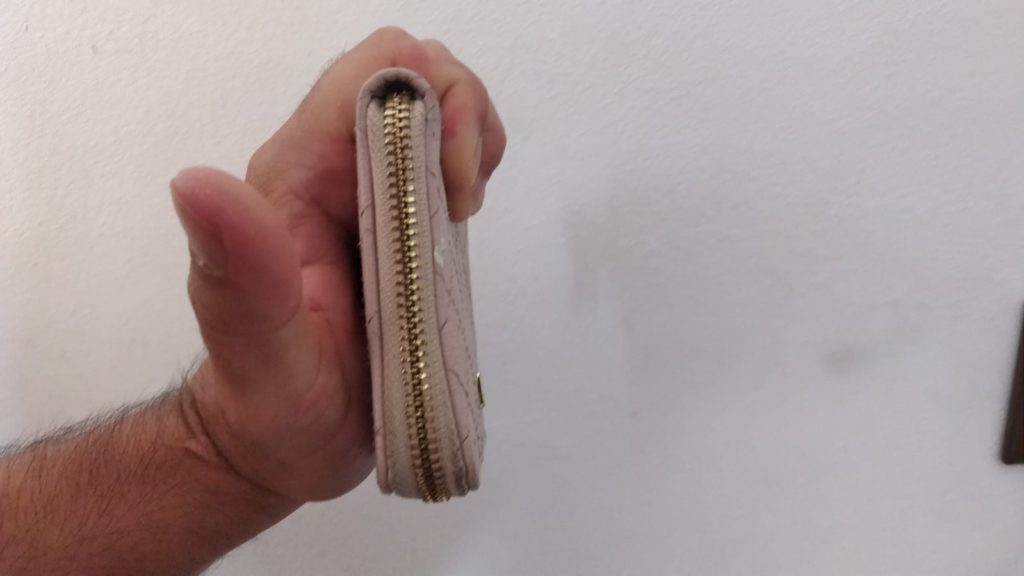
Strength in this position isn’t too much of an issue. The way the sleeve gets twisted into your crimp grip means it doesn’t take much effort to hold. However, it’s always good to have strong and conditioned fingers to be able to keep up with the opponents trying to break your grip free from collars.
5 Step Blueprint To Build A BJJ Strength Workout To Demolish Your Opposition
Learn how to plan your strength training to maximize transfer to the mats.
The clamp, pinch, and crushing grip are great exercises to strengthen your fingers. The clamp grip is similar to the crimp grip instead of gripping with just the fingers, the fingers press against the palm.
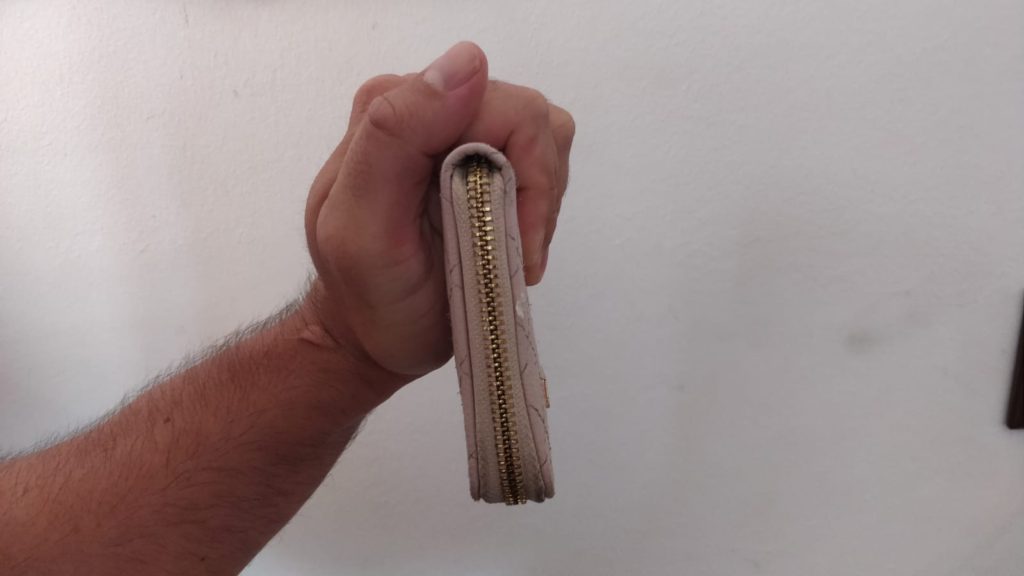
The pinch grip involves the thumb where the fingers and thumb are pressed together. The taxes the thumb heavily more so than the fingers. The thumb often gets used during collar chokes or gripping the lapel in general.
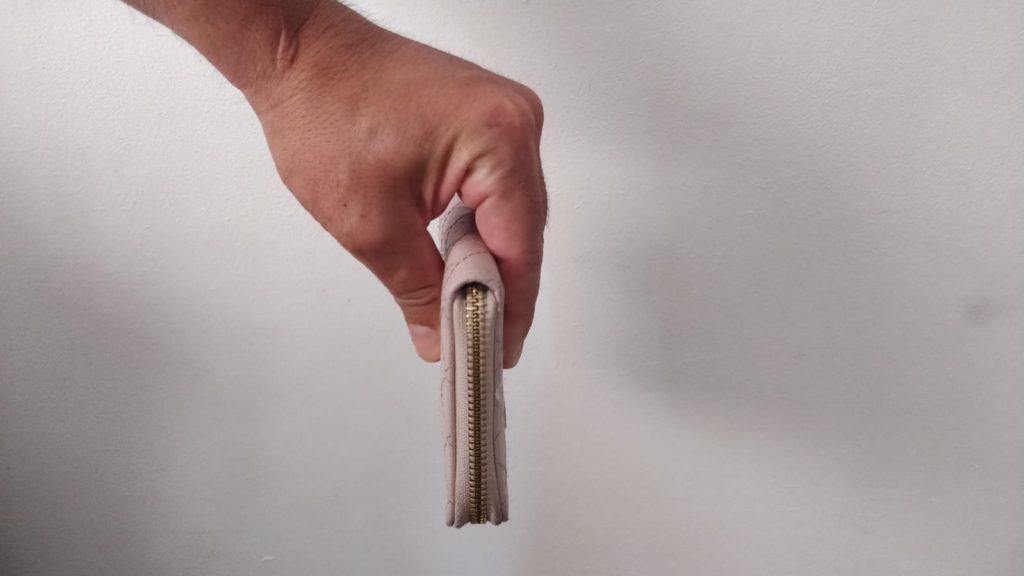
The crushing grip uses the fingers to generate force dynamically trying to squeeze or crush something. Think of trying to close a gripper.
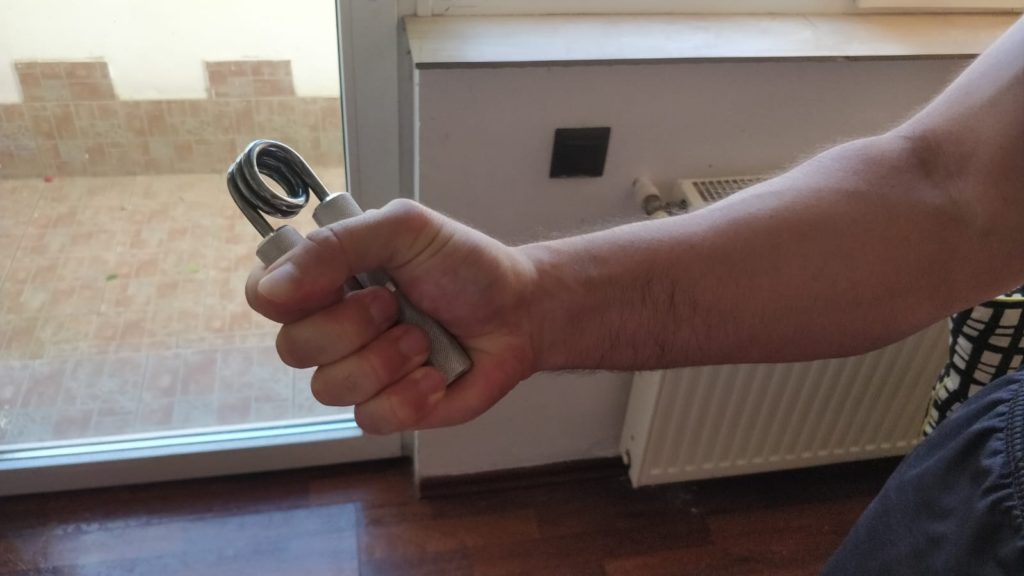
When playing no-gi, the support grip is the grip most often used since you can’t grip any clothing. The support grip is a static grip involving your whole hand, similar to how you would grip a barbell or pullup bar.
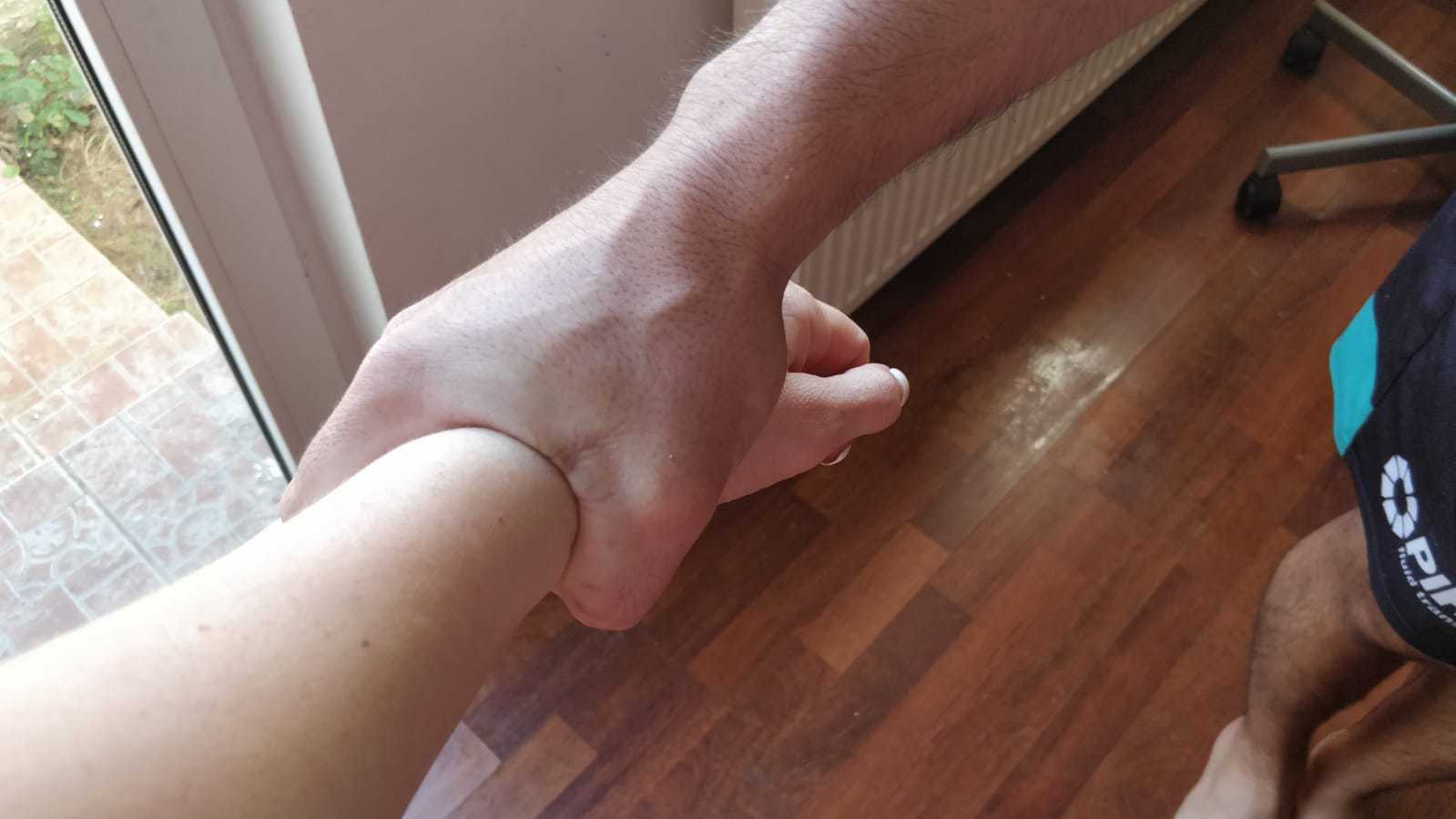
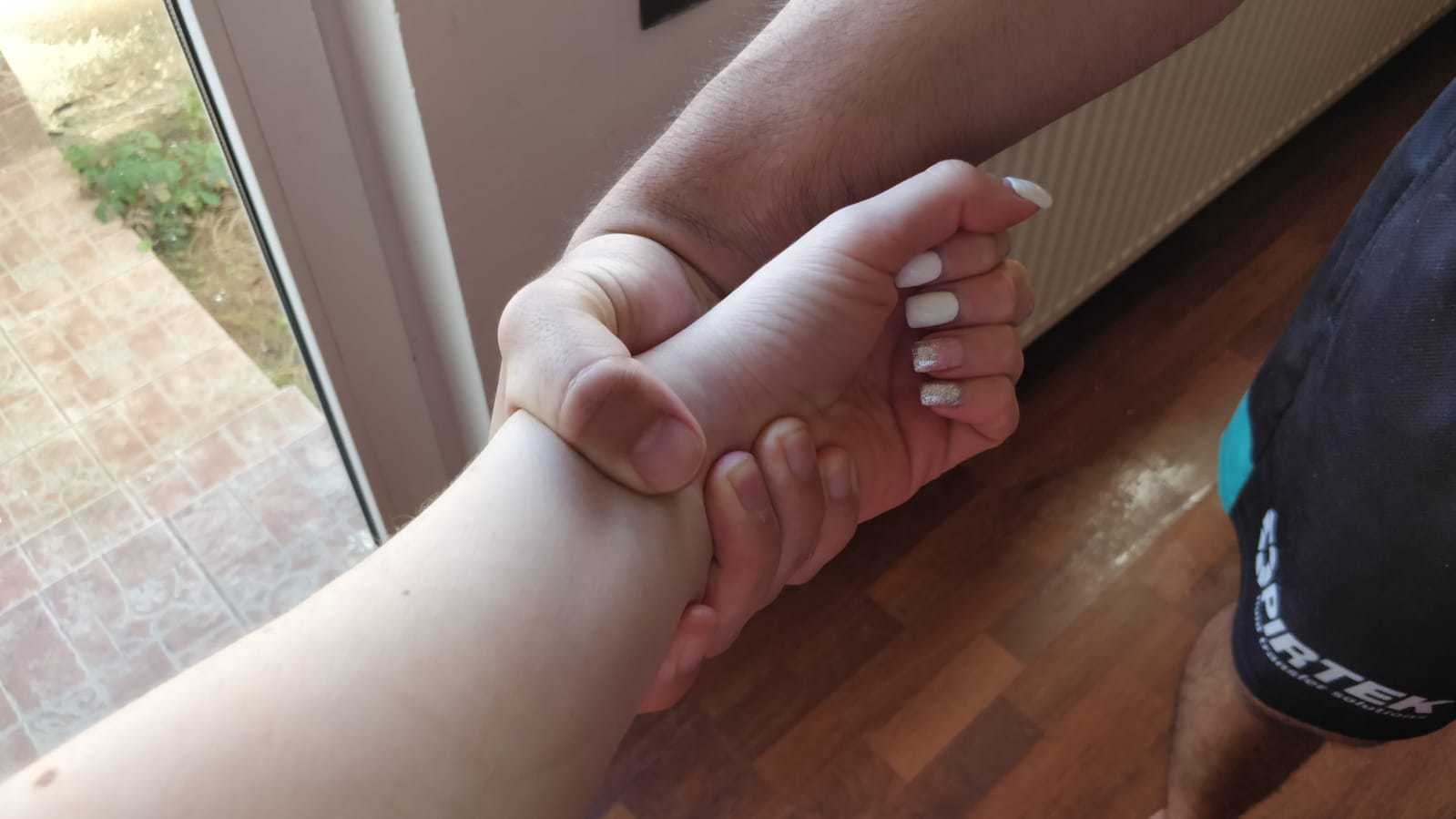
Similar to the support grip is the monkey grip. The only difference is the thumb is on the same side as the fingers. This grip is common in BJJ when controlling the wrist during submissions such as the kimura or when clamping the hands together. It can even occur when trying to wrap and opponent for a takedown but haven’t managed to get the hands together.
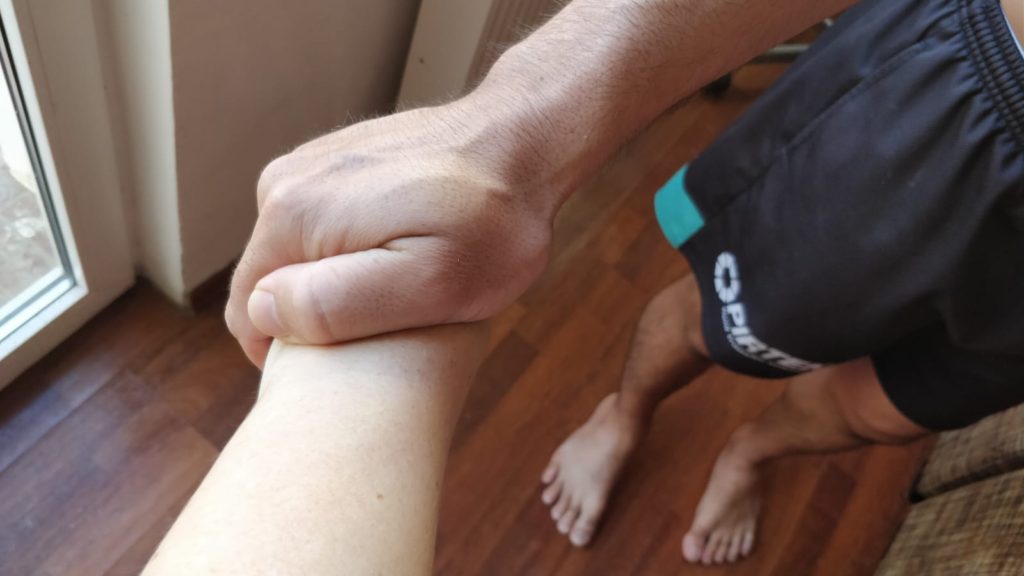
Training The Grip For BJJ
It’s time to ditch the 3 x 15 wrist curls at the end of your training session and develop some serious gripping strength. First, let’s organize which exercises fit into which category.
Crimp | Clamp | Pinch | Crush | Support | Monkey |
|---|---|---|---|---|---|
BJJ | Plate Clamp Lift | One Hand Plate Pinch | Grippers | Dead Hangs | Sandbag Deadlift To Bearhug |
Cell | EZ Bar Reverse Curl w/ Monkey Grip | Two Hand Plate Pinch | Gripper Holds | Pull-Ups | Monkey Grip Pull-Ups |
Cell | Cell | Hex DB Lift | Rope Pull-Up | 1-Arm Deadlift | Sandbag Carry |
Cell | Cell | Cell | Towel Pull-Up | Suitcase Deadlifts | Cell |
Cell | Cell | Cell | Towel Curls | Farmers Walk | Cell |
Cell | Cell | Cell | Towel Rows | Rope Pull-Up | Cell |
Cell | Cell | Cell | Cell | Towel Pull-Up | Cell |
Cell | Cell | Cell | Cell | Towel Farmers Walk | Cell |
Cell | Cell | Cell | Cell | Far Bar Anything | Cell |
This is not an exhaustive list but will give you an idea of where you can start.
Figuring out how often to train your grip is going to depend on how often you are training BJJ. If you are training almost every day, you may only directly train the grip 1-2x a week. Whereas if you are training only 2-4x a week, you may train your grip directly 3+ times a week.
One strategy is to replace some of your normal strength training movements with a more intensive grip variation as listed in the table above. For example, if you regularly perform pullups, you can replace them with towel or rope pull-ups for a month or two.
Another strategy is to perform a grip variation after your normal strength training variation. For example, performing 1-arm deadlifts after deadlifts or fat bar pullups after regular pullups. If you don't have access to a fat bar, you can add Fat Gripz to your bar.
In fact, I have a list of my favorite grip strength equipment specifically for grapplers.
Here are some sample grip routines to be performed within or at the end of your strength training session for 2x and 3x a week training:
Sample Grip Routines For BJJ
2x a week
Day 1
1) Far bar deadlift (use Fat Gripz) – work up to a heavy single. Remove 20% and perform as many reps as possible.
2) Two hand plate pinch – 2-3 x 20-30sec hold.
Day 2
1) Towel pullup – 3 x 5-10
2) Sandbag deadlift to bearhug 2-4 x 1-3
3) EZ bar reverse curl 3 x 15-20
3x a week
Day 1
1) Far bar deadlift – work up to a heavy single. Remove 20% and perform as many reps as possible.
2) Two hand plate pinch – 2-3 x 20-30sec hold.
Day 2
1) Towel pullup – 3 x 5-10
2) Sandbag deadlift to bearhug 2-4 x 1-3
Day 3
1) Plate clamp lift 3 x 1-3
2) Towel curls 3 x 10-15
As maximal grip strength improves, strength endurance usually follows as now the grip strength used during BJJ will be at a lower intensity of your new maximum strength. However, specifically training grip strength endurance can easily be implemented into a grip training program. Here are some exercise examples.
Fat bar power holds – hold a fat bar at the top of a deadlift for 30-60 sec.
Wrist rollers
Dead hang – hang from a pullup bar for 30-60 sec.
How To Keep Your Hands Healthy
It’s important when starting grip training that you take the appropriate steps to ensure your hands stay healthy. It can be easy to strain and injure the small muscles in your hands and forearms. So here are some tips to keep you training your grip throughout your BJJ career.
1. Start light – if performing regular pullups is difficult, don’t opt for towel pullups. Perform towel curls or rows instead where you can control the weight. Same with deadlifts. Don’t work up to a heavy load in your first few weeks of grip training. Progress your loads slowly and steadily.
2. Don’t do too much – grip training and challenging your grip can be fun. Gains come quickly especially to those that haven’t trained their grip before. You must remember that your grip will also get taxed every time you train BJJ.
Keep the volume low and the number of exercises to a maximum of 2 or 3. If you are performing traditional strength training exercises, considering substituting one set for something more grip intensive like with a towel.
3. Perform finger extensions – when performing a lot of gripping actions, you can develop pain in your fingers, elbows, and wrists. Performing finger extensions balances out all of your grip work much like performing back exercises help to balance out performing many chest exercises. Simply place a rubber band around your fingers and open your hand.
